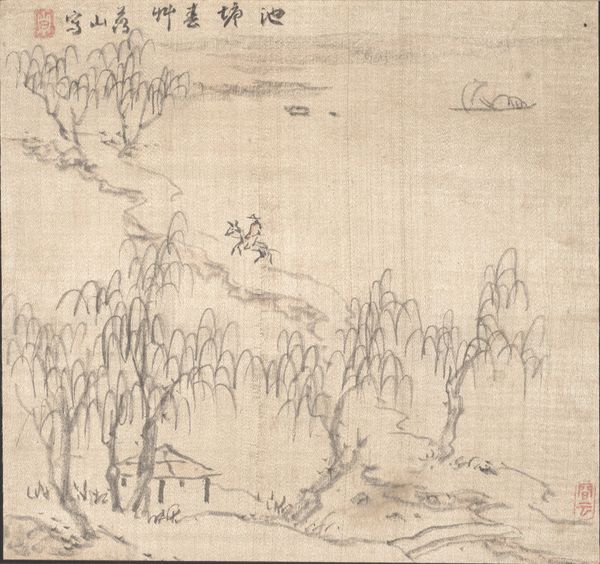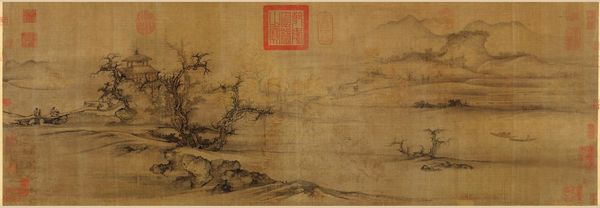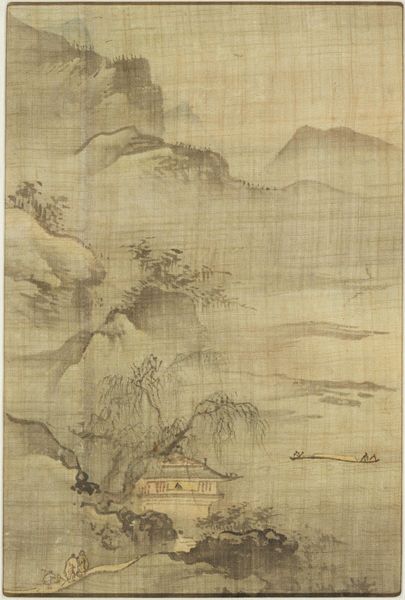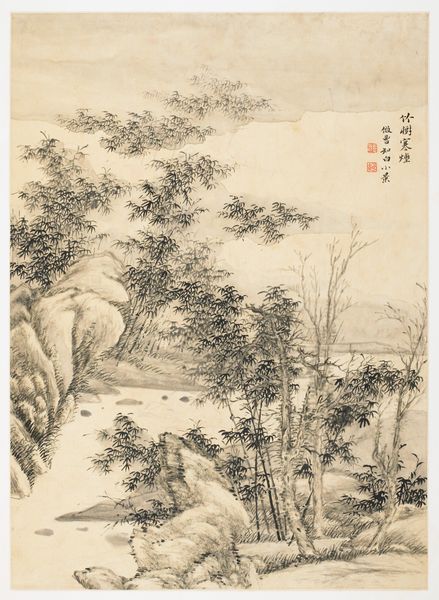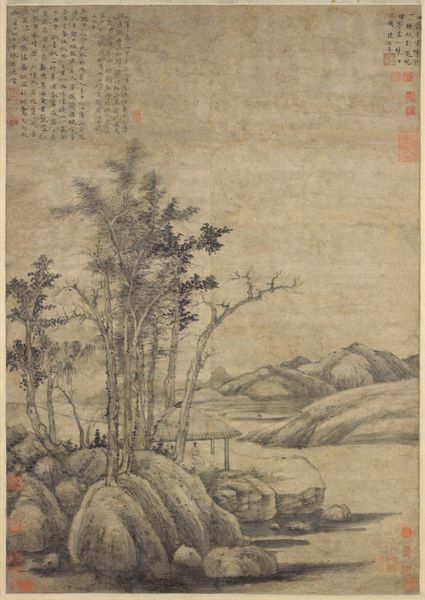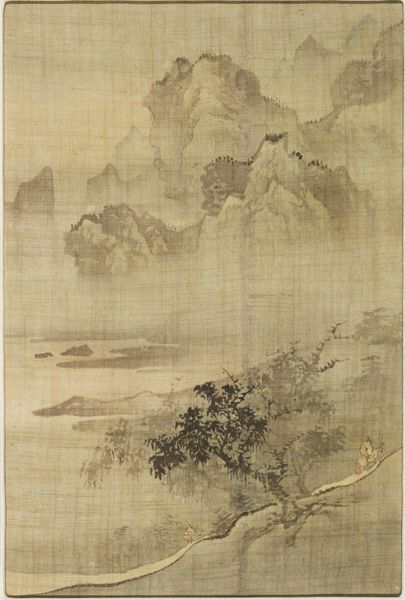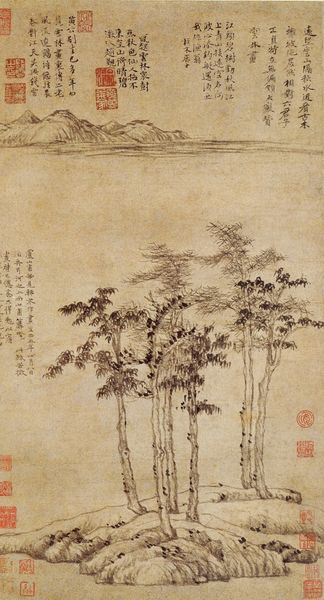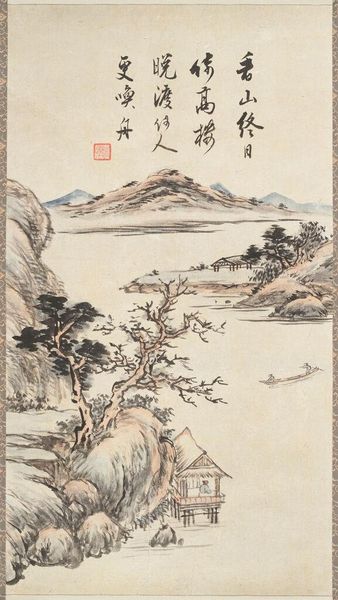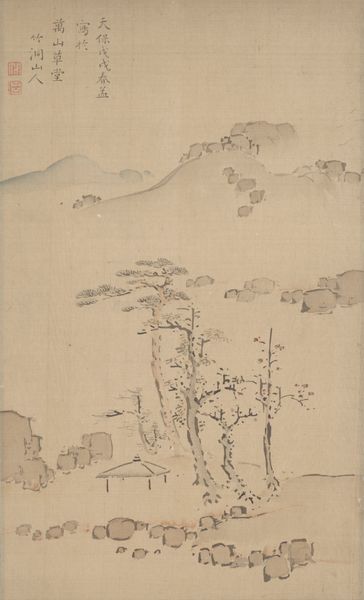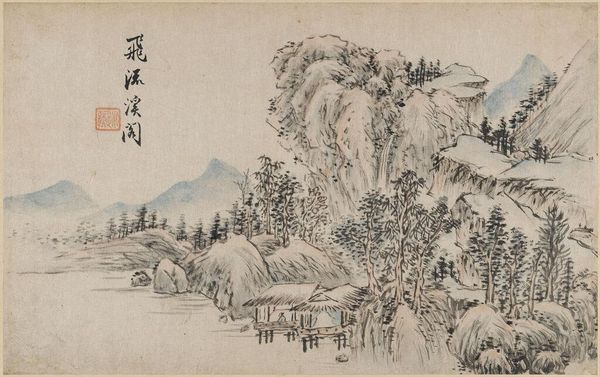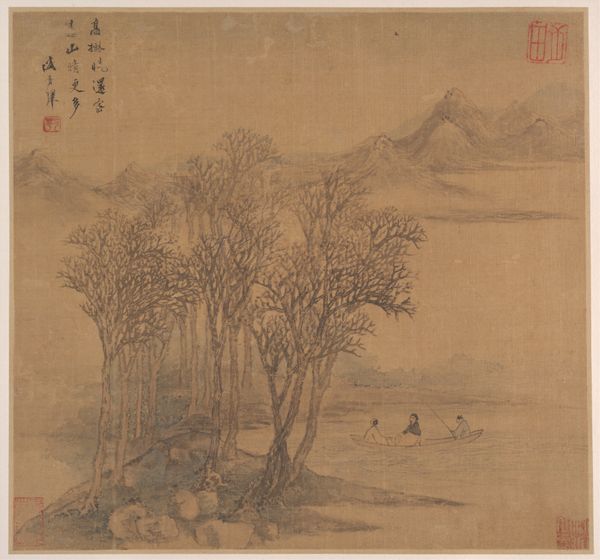
drawing, painting, paper, ink
#
tree
#
drawing
#
painting
#
asian-art
#
landscape
#
paper
#
ink
#
monochrome
Copyright: Public domain
Editor: Here we have "The Rongxi Studio," a landscape painting created in 1372 by Ni Zan. It's ink on paper and feels very… quiet to me. The composition is so sparse. What do you see in this piece? Curator: Quiet is a great word. It whispers, doesn’t it? It’s a landscape, but not like a photograph. Think of it as a reflection of the artist's mind more than a depiction of a place. Ni Zan was living in a time of upheaval, a new dynasty coming to power. What would it feel like to retreat inward and create such simplicity? It’s not about grand mountains or sweeping vistas. What purpose would all of that have served? Editor: So, the sparseness is intentional? A way to express…discomfort, maybe? Curator: Perhaps. Or a way of finding solace through paring down, looking for only that which remains stable or meaningful within one’s spirit when the world outside is being turned on its head. This reductive process almost mirrors the literati’s quest for personal freedom in an unstable era. Ni Zan distills the essence of landscape to just a few strokes, creating space for contemplation and hinting at a personal purity amidst chaos. But is that too much projection, do you think? Editor: Not at all. I was so focused on the lack of detail, I completely missed the idea that it was a choice, and probably a conscious one, born from what was happening in his life. I get a completely different sense of the artwork now that you mention that. Curator: Isn’t it wonderful how a little context can unlock a whole new dimension? Editor: Absolutely, this was really enlightening, thank you.
Comments
No comments
Be the first to comment and join the conversation on the ultimate creative platform.
